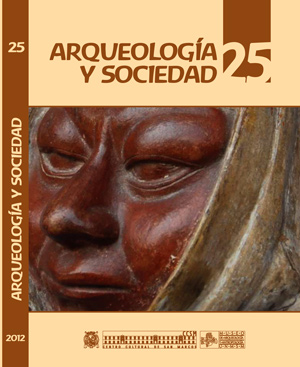INTERREGIONAL ROUTES IN THE FORMATIVE PERIOD IN NORTHERN PERU AND SOUTHERN ECUADOR: A PERSPECTIVE FROM THE INGATAMBO SITE, HUANCABAMBA VALLEY
DOI:
https://doi.org/10.15381/arqueolsoc.2012n25.e12353Keywords:
Exchange routes, GIS, least cost paths, transportation, Ingatambo.Abstract
This article presents a hypothesis about the interregional exchange routes during the Formative period in northern Peru and southern Ecuador from the point of view the Huancabamba Valley, especially the archaeological site of Ingatambo. This hypothesis is based on an analysis of GIS (Geographic Information Systems), «least-cost paths», and the comparison of archaeological materials. This analysis showed that the routes transformed gradually during the Middle Formative period due to a change in the transportation means, from traveling on foot to the use of camelids, which was closely related to the social change of the sites connected by them. Considering the excavated data of Ingatambo, there is a relationship between the selection of routes and the social context where interregional exchange and the establishment of contact with groups in neighboring areas become important as a social strategy.Downloads
Published
Issue
Section
License
Copyright (c) 2012 Atsushi Yamamoto

This work is licensed under a Creative Commons Attribution-NonCommercial-ShareAlike 4.0 International License.
THE AUTHORS RETAIN THEIR RIGHTS:
a. The authors retain their trademark and patent rights, and also on any process or procedure described in the article.
b. The authors retain the right to share, copy, distribute, perform and publicly communicate the article published in the Arqueología y Sociedad (for example, place it in an institutional repository or publish it in a book), with an acknowledgment of its initial publication in the Arqueología y Sociedad.
c. The authors retain the right to make a subsequent publication of their work, to use the article or any part of it (for example: a compilation of their works, notes for conferences, thesis, or for a book), provided that they indicate the source. of publication (authors of the work, journal, volume, number and date).






